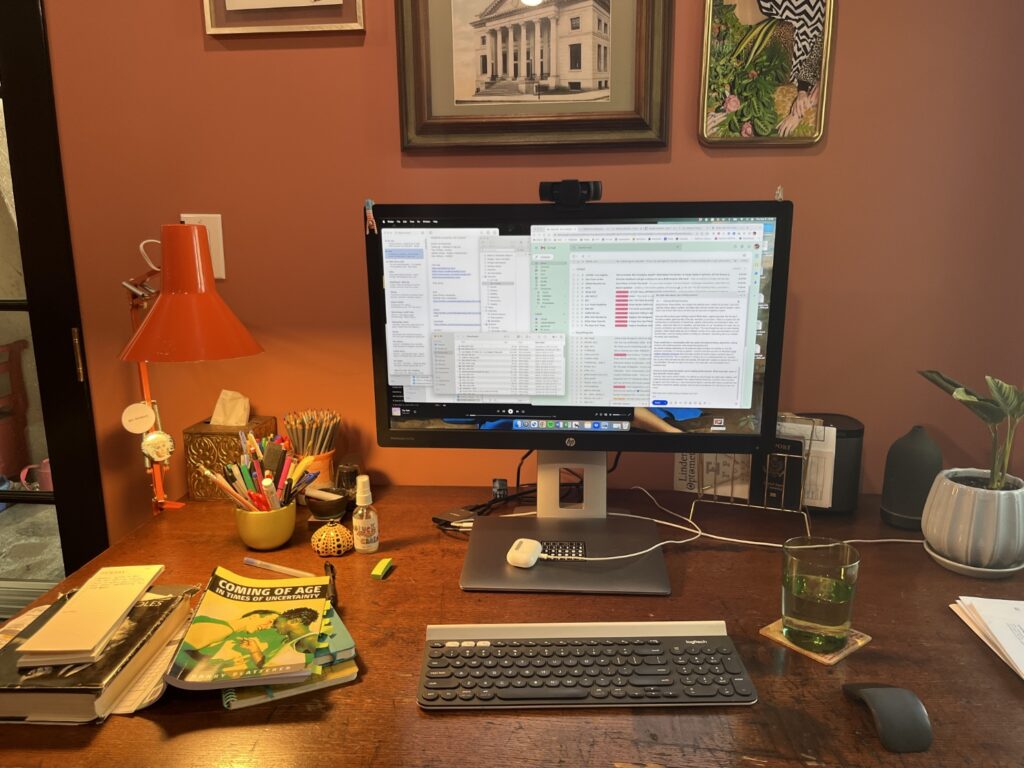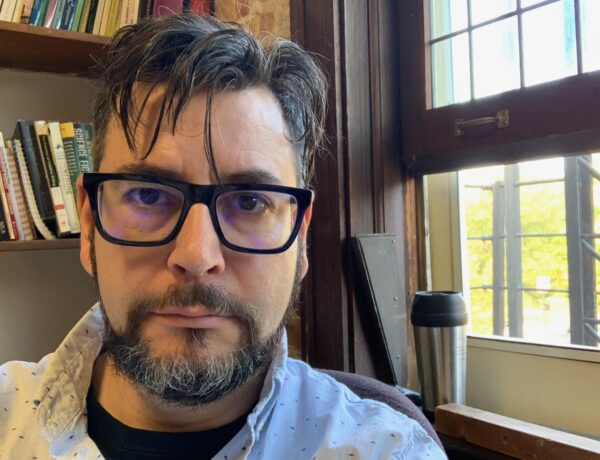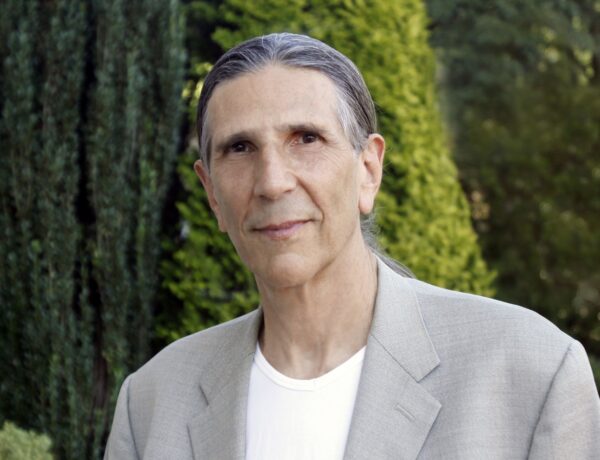Ann Friedman is a journalist, essayist, and author known for her popular weekly email newsletter. She co-wrote the best-selling book, Big Friendship: How We Keep Each Other Close and co-hosted the pioneering podcast, Call Your Girlfriend.
Her writing can be found in publications such as The Cut, The Los Angeles Times, The New York Times, and ELLE, and she is a contributing editor to The Gentlewoman. Alongside her friend Jade Chang, she runs creative workshops. Currently, Ann is working on a new book about modern adulthood to be published by Viking Books in 2024. Originally from Dubuque, Iowa, Ann now resides in Los Angeles, California.
Photo credit: Ryan Schude
Looking for inspiration to help you achieve your writing goals? Subscribe to our newsletter for exclusive insights into the routines, habits, and techniques of some of the most celebrated authors in history.
Hi Ann, great to have you here with us today! You are known for your popular weekly newsletter, which covers a wide range of topics from current events to pop culture to personal reflections. How do you curate and choose the content for each newsletter?
My process involves keeping track of things I’ve read and seen all week, then opening up my notes app on Friday morning to form it all into a newsletter. I tend to choose things that I haven’t seen linked in a million other places, and to prioritize independent media outlets. It’s always interesting to see the themes that naturally emerge. I think I’ve been able to do this weekly for a full decade because I enjoy the process so much.
Big Friendship explores the complexities of maintaining close friendships over time. What drew you to this topic, and what have you learned about friendship through the process of writing and promoting the book?
My friend and collaborator Aminatou Sow and I tried to write the book that we needed to read. Close friendships are not always easy to maintain, but the rewards of doing so are huge—especially at a time when people are romantically partnering up later in life (if at all). Friendship is the main way we practice intimacy and find community support, but it all happens outside the bounds of official policies and social norms. That’s fascinating!
The writing process, for us, began with lots of conversations, which we then translated to the page in the form of a “we” voice. That took a LOT of patience and trust, two things that are key to long term friendship. I wish that everyone could have the challenging but revealing experience of trying to forge a common narrative with one of their friends.
You’ve written for a variety of publications, from The Cut to The New York Times to ELLE. How do you approach writing for different audiences and platforms?
Writing for any publication is about finding the overlap between your voice and theirs. So the sooner you make peace with the fact that it’s not all about you, the easier the editing process is. That said, I’ve learned the hard way that certain editors and publications just aren’t a good fit for me, and I’ve chosen to not write for those places anymore. My newsletter is the place where I get to fully exercise my own voice, and that’s one of the many reasons I value it so much.
Do you struggle to stay focused while writing? You’re not alone! That’s why Famous Writing Routines recommends Freedom – the ultimate app and website blocker for Mac, Windows, Android, iOS, and Chrome. With over 2.5 million users, Freedom helps writers stay on task and avoid distractions. Get started for free today and reclaim your productivity!
Your next book, about modern adulthood, is set to be published in 2024. What inspired you to write about this topic, and what can readers expect from the book?
I got interested in this topic because I spent a lot of 2021 working on a book proposal about homeownership that failed to sell. I realized that the root of my interest in the topic of who gets to own a home in America (and how they come to own it) boiled down to an interest in the goals and desires that underpin modern adulthood—and about how dramatically the markers of American adulthood have shifted since the last century.
I also knew I wanted to write something that involved a lot of interviews with people who aren’t public figures. Then I ended up reading the 1976 book Passages by journalist Gail Sheehy, which was based on 100 interviews with people about their adult lives. It was almost shocking how quaint their stories felt to me, reading in 2022. I decided I wanted to try to paint a portrait of modern adulthood through a similar commitment to interviews, while also critiquing the last century’s ideas about what it means to grow up.
In your writing, you often explore the intersection of personal experience and larger social issues. How do you see your own experiences informing your writing, and how do you balance the personal with the political?
I think every writer’s experiences inform their writing—and that’s true of even the most “objective” traditional newspaper reporter. I try to let my curiosity guide me, while also understanding the ways my experience might not be everyone’s experience of a certain issue or question. Absolutely everything is political! But every piece of writing does not have to attempt to explain the political implications—how explicit to make the political angle on a given topic is a choice that has to do with tone, format, audience.
You are a contributing editor to The Gentlewoman, a magazine known for its thoughtful profiles of successful women. What do you enjoy most about writing profiles, and how do you approach capturing the essence of your subjects?
I love writing for The Gentlewoman because the editorial interest of the magazine is centered on a profile subject’s work and creativity. I never have to write a dishy paragraph exposing a subject’s personal life (unless it’s relevant to their work), I never have to profile someone who’s famous just for being famous. Penny Martin, who shapes this editorial vision, makes my job easy. I get to be naturally curious about a subject, and follow them into the corners they want to explore. I don’t have to try to force them into a narrative box the way some magazines expect.
Can you tell us about your writing routine? What does a typical day look like for you?
I’m sorry to report, given the title of this site, that there is no routine. There is no typical day. My working life is a combination of researching, reading, interviewing, business/admin tasks, and writing. I write more when I’m on deadline, and less when I’m not. Sometimes I’m really into my journal, sometimes I go months without touching it. The only throughlines are my note-keeping practice—which means there are lots of different sections of my notes app dedicated to my half-formed ideas—and my weekly practice of writing the newsletter. Everything else is so variable it’s hardly worth describing.
If you could have a conversation with any author throughout history about their writing routine and creative process, who would that person be?
My answer changes depending on the particular piece of writing I’m working on, and the particular challenges I’m coming up against. I recently loved the way that Jon Mooallem wove together disparate narratives about the early months of COVID to make a coherent piece of writing about that time. This is something I’m trying to do in my adulthood book. So I emailed him to see if he’d chat with me about his process. (He said yes!) I guess my answer this week is “Jon Mooallem.” But ask me again next week or the week after, and I’d probably name someone else.
I’d love to know about the books you’re reading at the moment. What have been some of your favorite recent reads?
I recently read Lauren Groff’s Florida—I’m making my way through her back catalog—and it was the rare short story collection that I easily finished. (Normally I put them down and then struggle to pick them back up.) I also loved Muriel Spark’s Loitering With Intent, a novel from the 80s that’s all about the creative process, and the blurry line between life informing art and art informing life.

Affiliate disclaimer: Some links on this website are affiliate links. We may earn a small commission if you make a purchase through these links, but only promote products we truly believe in. We disclose affiliate links and give honest reviews.



No Comments